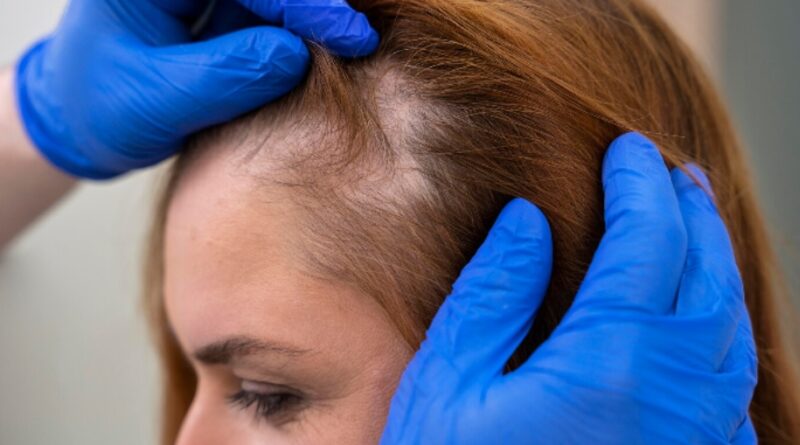How Hair Transplant Clinics Treat Female Hair Loss
Female hair loss can be emotionally distressing and socially challenging. While often associated with ageing or genetics, hair loss in women may have multiple causes and needs a personalised approach. Fortunately, specialised hair transplant clinics in Melbourne are increasingly equipped to treat female hair loss with tailored strategies and effective procedures.
Understanding the available treatments and what to expect can help women feel empowered and informed in their hair restoration journey.
Understanding Female Hair Loss
Common Causes of Hair Loss in Women
Hair loss in women can occur at any age and may be caused by a wide range of factors, including:
- Genetic predisposition (female-pattern hair loss)
- Hormonal changes due to pregnancy, menopause, thyroid conditions or polycystic ovary syndrome (PCOS)
- Nutritional deficiencies such as low iron, zinc, or vitamin D
- Stress and emotional trauma
- Underlying issues like autoimmune disorders or scalp infections could be the hidden cause don’t overlook them
- Hair styling practices, including frequent heat styling or tight hairstyles
- Medications, such as those for blood pressure, depression, or chemotherapy
Identifying the exact cause is essential before pursuing any treatment, including hair transplants.
Differences from Male Hair Loss

Unlike men, who usually experience hairline recession or balding at the crown, women often develop diffuse thinning across the scalp. This difference in pattern plays a crucial role in determining whether a hair transplant for female patients is appropriate.
Assessment at Melbourne Hair Transplant Clinics
Personalised Consultation and Diagnosis
Top Melbourne hair transplant clinics begin with a comprehensive consultation. This may involve:
- Scalp examination
- Medical history review
- Blood tests to rule out deficiencies or hormonal imbalances
- Dermoscopy to assess follicle health
The goal is to determine the type of hair loss, its progression, and the best course of action.
Suitability for Hair Transplant
Hair transplants aren’t right for every woman personalized evaluation is key to the best results. The most suitable candidates are those with:
- Stable hair loss patterns
- Localised thinning (e.g. crown or part line)
- A healthy donor area at the back or sides of the scalp
Women with diffuse thinning across the entire scalp may benefit more from non-surgical treatments unless a specific region is significantly affected.
Hair Transplant Techniques for Women
Follicular Unit Extraction (FUE)
FUE is the most commonly used technique in female hair restoration. It involves harvesting individual follicles from the donor area and implanting them into the thinning region. This method avoids a linear scar and allows for a more natural hairline design.
Advantages of FUE for women:
- Minimal downtime and scarring
- No need to shave the entire head
- Achieve a flawless, natural look with expert precision in graft placement
Follicular Unit Transplantation (FUT)
FUT removes a small strip of scalp, expertly divided into follicular units for fuller, natural-looking hair restoration. While it can yield more grafts in one session, it leaves a linear scar and may not be preferred by all women.
Female Hairline Design
A critical element in hair transplant for female patients is ensuring the hairline looks soft and natural. Surgeons pay close attention to density, direction, and angle to create results that blend seamlessly with existing hair.
Non-Surgical Treatments Offered by Clinics
For women who are not ideal candidates for surgery or are in the early stages of hair loss, clinics offer non-surgical alternatives.
Platelet-Rich Plasma (PRP) Therapy

PRP uses the patient’s own blood to concentrate platelets and inject growth factors into the scalp. This stimulates hair growth and strengthens existing follicles.
Ideal for:
- Early stages of hair loss
- Postpartum thinning
- Hormonal hair loss support
Low-Level Laser Therapy (LLLT)
This treatment uses red light to stimulate blood flow and cellular activity in the scalp, promoting healthier hair follicles.
Often used in combination with PRP or medications to improve results.
Medications and Topical Treatments
- Minoxidil: A topical solution that stimulates follicles and prolongs hair growth phases
- Spironolactone: Prescribed off-label for hormonal hair loss in women
- Nutritional support: Clinics may also recommend supplements like iron, biotin, and zinc
Realistic Expectations and Results
Gradual Improvements
Hair restoration takes time. Patients typically begin seeing results from transplants between 3 to 6 months, with full growth visible after 12 to 18 months.
Maintenance May Be Required
Ongoing maintenance with PRP, medications, or LLLT may be recommended to preserve natural hair and support new growth.
Emotional Benefits
Hair restoration is not just cosmetic—it can significantly improve self-esteem and confidence. Many women report feeling more positive about their appearance and less anxious in social situations after treatment.
Choosing a Melbourne Hair Transplant Clinic
What to Look For
When selecting a clinic, it’s important to look for:
- Surgeons with specific experience in treating female hair loss
- A clinic that offers both surgical and non-surgical options
- Transparent consultations and realistic guidance
- Before-and-after photos of female patients
- Nurse-led support for follow-up care
Melbourne has several reputable hair transplant centres known for their expertise in female hair restoration and personalised care.
Conclusion
Female hair loss can be complex and emotionally taxing, but help is available. Melbourne hair transplant clinics are equipped with advanced technology, skilled teams, and tailored treatment plans to address each woman’s unique needs. Whether you’re dealing with localised thinning or hormonal hair loss, the right solution is often a combination of treatments rather than a one-size-fits-all fix.
A well-informed approach, early intervention, and realistic expectations can go a long way toward regaining not just your hair—but your confidence.
Also Read: Recifest.com: The Ultimate Knowledge Hub for Smart Readers
